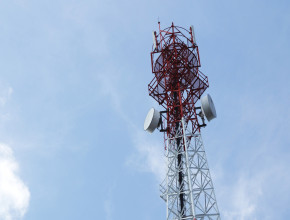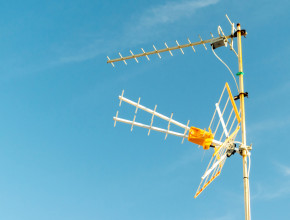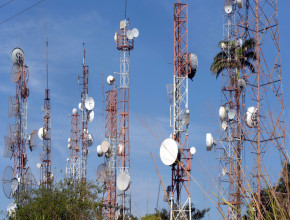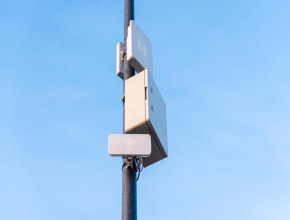
In communication and radar systems, passive and active antennas are two famous names that you often hear. These devices create wireless communication and help equipment and systems to create connections with each other. If you don’t know the dissimilarity between them, this guide is dedicated to outlining the differences between a passive antenna and an active antenna. Let’s get started!
What is a Passive Antenna?
A passive antenna is a device that is used for wireless connection, but it lacks a built-in amplifier. This equipment depends on external devices for signal boosting. Some of the popular examples of passive antennas are Yagi antennas, dipole antennas, and parabolic dish antennas.
Passive antennas can be both directional and omnidirectional radiation patterns. Their size also varies from small indoor models to large outdoor setups. They are used for applications like radio broadcasting, TV reception, satellite communication, and radar systems. The best passive antennas are used to get a wireless connection on TVs, radios, Wi-Fi routers, GPS devices, mobile phones, and more.
What is an Active Antenna?
An active antenna is a device that helps in transmitting and receiving radio signals with a built-in amplifier. This equipment can act as both a directional and omnidirectional antenna, which means it helps you receive and send signals in one direction or all directions. The built-in amplifier of this wireless solution helps enhance weak signals, which makes this device a better solution in underprivileged and extreme areas.
Active antennas are useful in both outdoor and indoor conditions. You can install it in GPS, radio, TV broadcasting, mobile communication, and radar systems. Overall, active antennas play a crucial role in satellites, military applications, remote sensing, and emergency communications. This device can be mounted on smartphones, vehicles, aircraft, and navigation systems to make seamless connectivity between two or more points.
Difference Between Passive Antenna and Active Antenna
A common misconception is that active and passive antennas function the same because both receive and share signals. Antenna enthusiasts often overlook that active antennas feature a dedicated amplifier, while passive antennas come without any amplifier and depend on an external one. However, there are many other dissimilarities between both. Here we are going to cover the major differences between passive antennas and active antennas:
Signal Amplification
Passive antennas have no built-in amplification feature. This means they receive the signal as it is with no ability to increase the signal strength. In case, if you want to amplify your signal with this device, you will need an external device, such as a signal booster or receiver.
On the other hand, active antennas have an internal amplifier. This is what differentiates this device from passive antennas. It can receive signals and can increase its strength. This makes it one of the reliable solutions for areas where signals are weak. You can use this antenna in areas with poor-quality radio signals. The built-in amplification of the active antennas will help you receive a stable signal without relying on a dedicated external booster.
Power Requirement
Passive antennas do not require any external power source. The reason for this is basic: because it works with the signal that it captures. For example, if you use a passive FM radio antenna, you do not need power.
Talking about a dedicated active antenna, its built-in amplifier requires an external power supply to operate. Its amplifier plays a big role in amplifying the received or transmitted signals. This is why you have to invest in a device that can power this wireless solution. For example, an active GPS antenna needs power to boost the weak signals from the satellites.
Size and Design
Passive antennas feature a simple design with elements like metal rods, loops, or dipoles. If you want to communicate with lower frequencies, you need to have a larger antenna. However, the size of the passive antenna also depends on the frequencies at which the antenna is going to operate.
Active antennas can be more complex in their design and structure. Their design includes a dedicated amplifier circuit, which complicates it compared to passive antennas. However, active antennas can be smaller than passive antennas if similar performance is required.
Applications and Uses
Passive antennas are used in many applications where the signals are strong, such as TV reception, FM radio, Wi-Fi routers, satellite dishes, and amateur radio systems. For example, a home TV antenna is a good example of a passive antenna. You can use it in your home if broadcasting signals are strong.
Active antennas are used in applications where the signal environment is weak, such as GPS systems, aircraft communication, military radar, remote sensing, and satellite communication. One of the common examples of active antennas is car antennas. You can mount it on the car so that your car can have wireless communication even under a tunnel, forest, etc.
How To Determine What Type of Antenna You Need
To determine which type of antenna you should choose, the answer is not too complicated, as you only need to consider the price, application, and supported devices. Remember that passive antennas come at a cheaper price. But you need an external booster to boost the weak signals. However, they are an ideal solution in the condition if you are already in a location where signals are strong.
Speaking of active antennas, this device is better to have support for high bandwidth. This requires power and can exceed the valid signal limit. To establish wireless communication for long distances, active antennas will be your best option. However, for areas with strong signals, a passive antenna will suffice. Whatever decision you make, think about your location, budget, and signal strength.
Final Words
Today, active and passive antennas shape our wireless and digital world. Passive antennas do not require any power to work and they only provide pure signal relay. While active antennas are known for amplifying weak signals. This makes both solutions some of the most sought-after communication tools. They are often used together, from TV to satellite and Wi-Fi to GPS. And this ensures seamless connectivity across cities, remote areas, and even in space. We hope you have gained a more in-depth understanding of how both antennas are unique from each other despite being used to receive and share radio signals.





